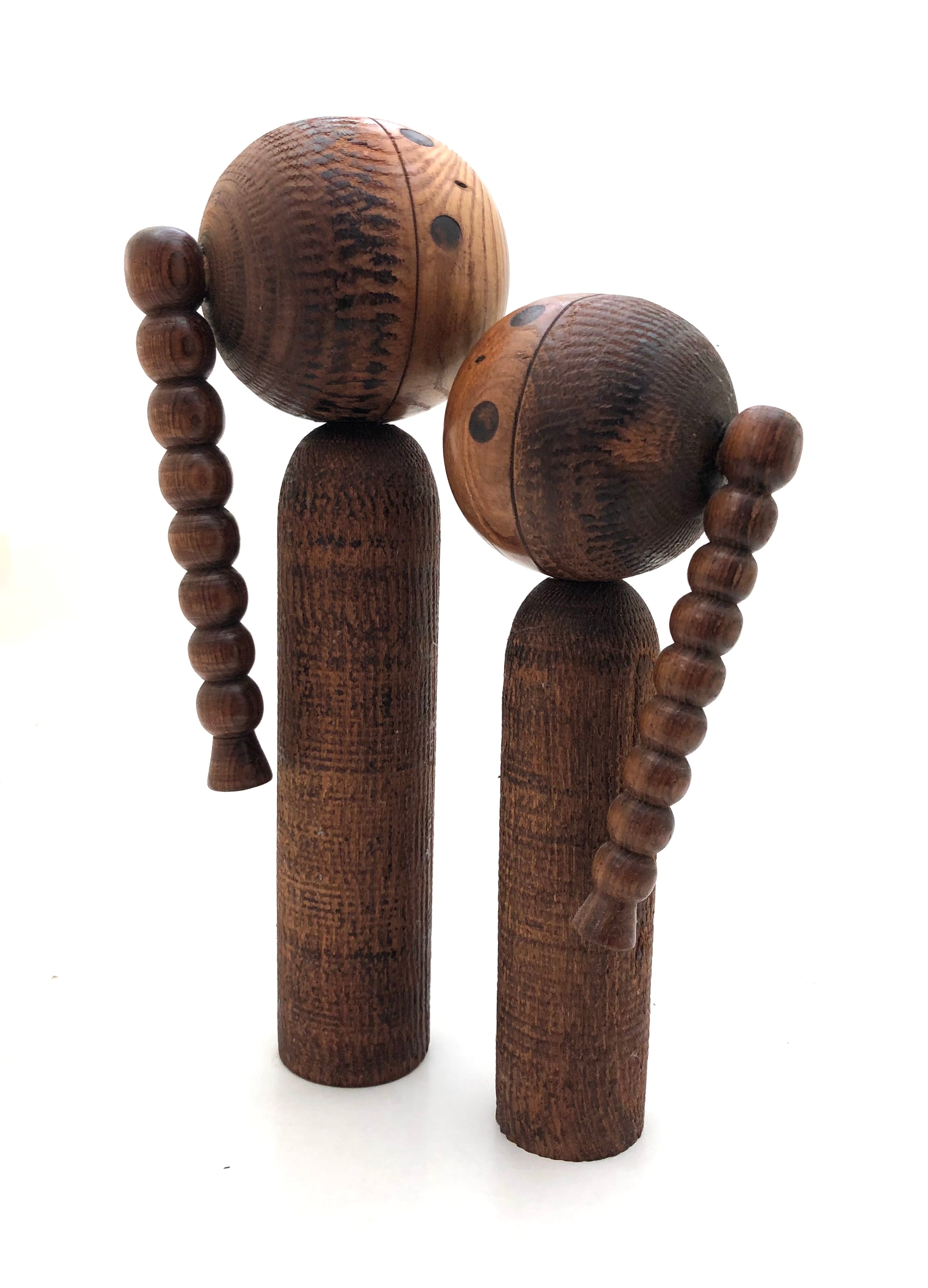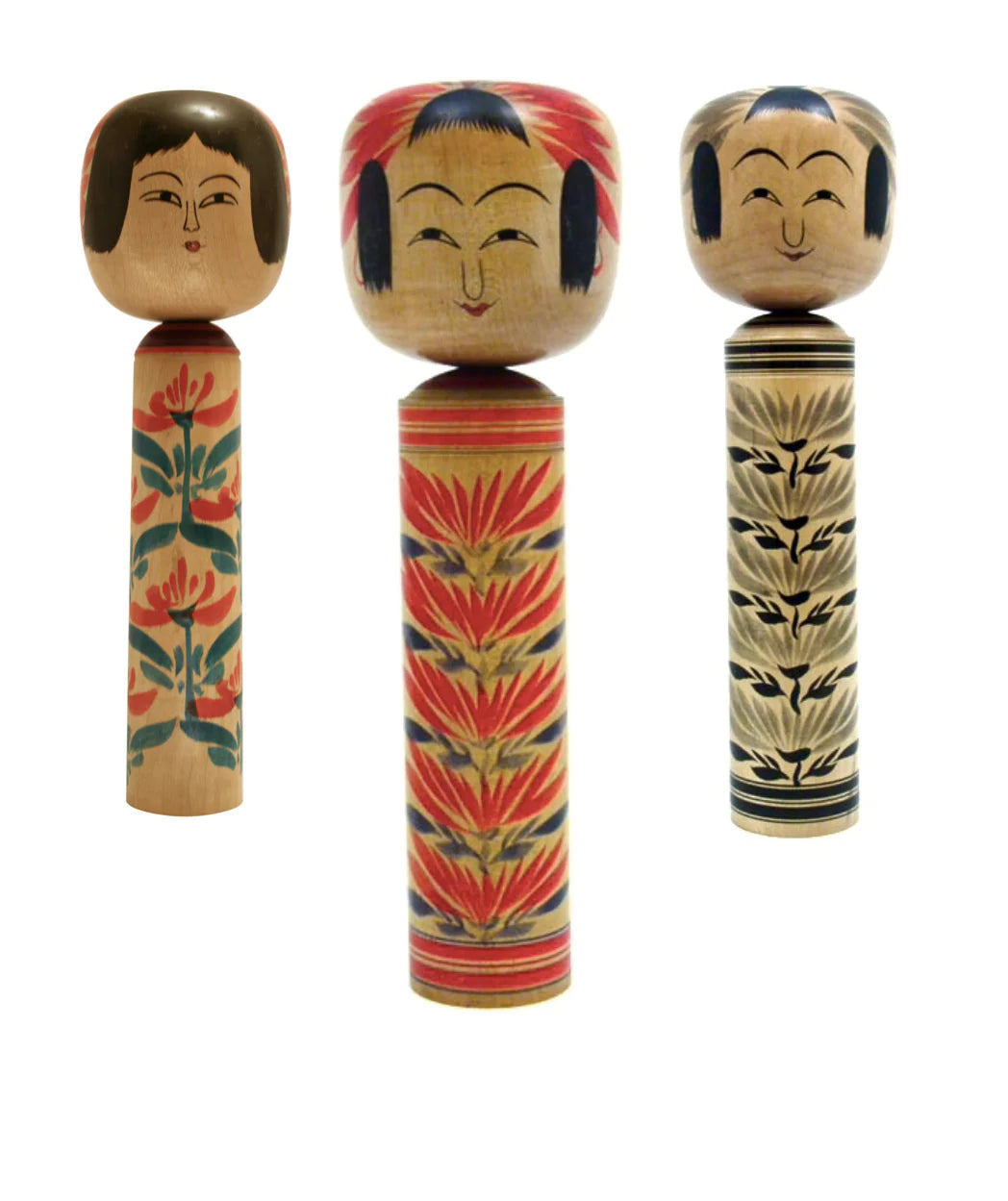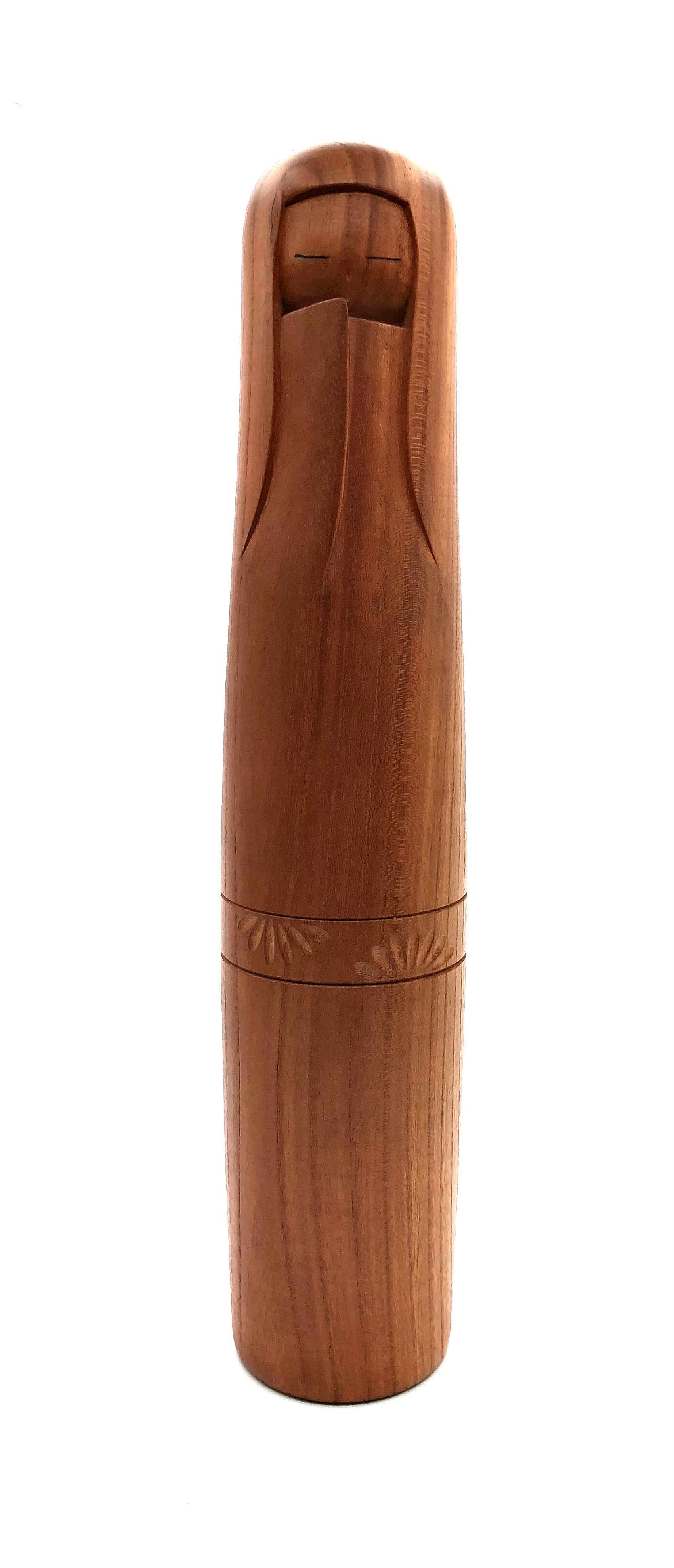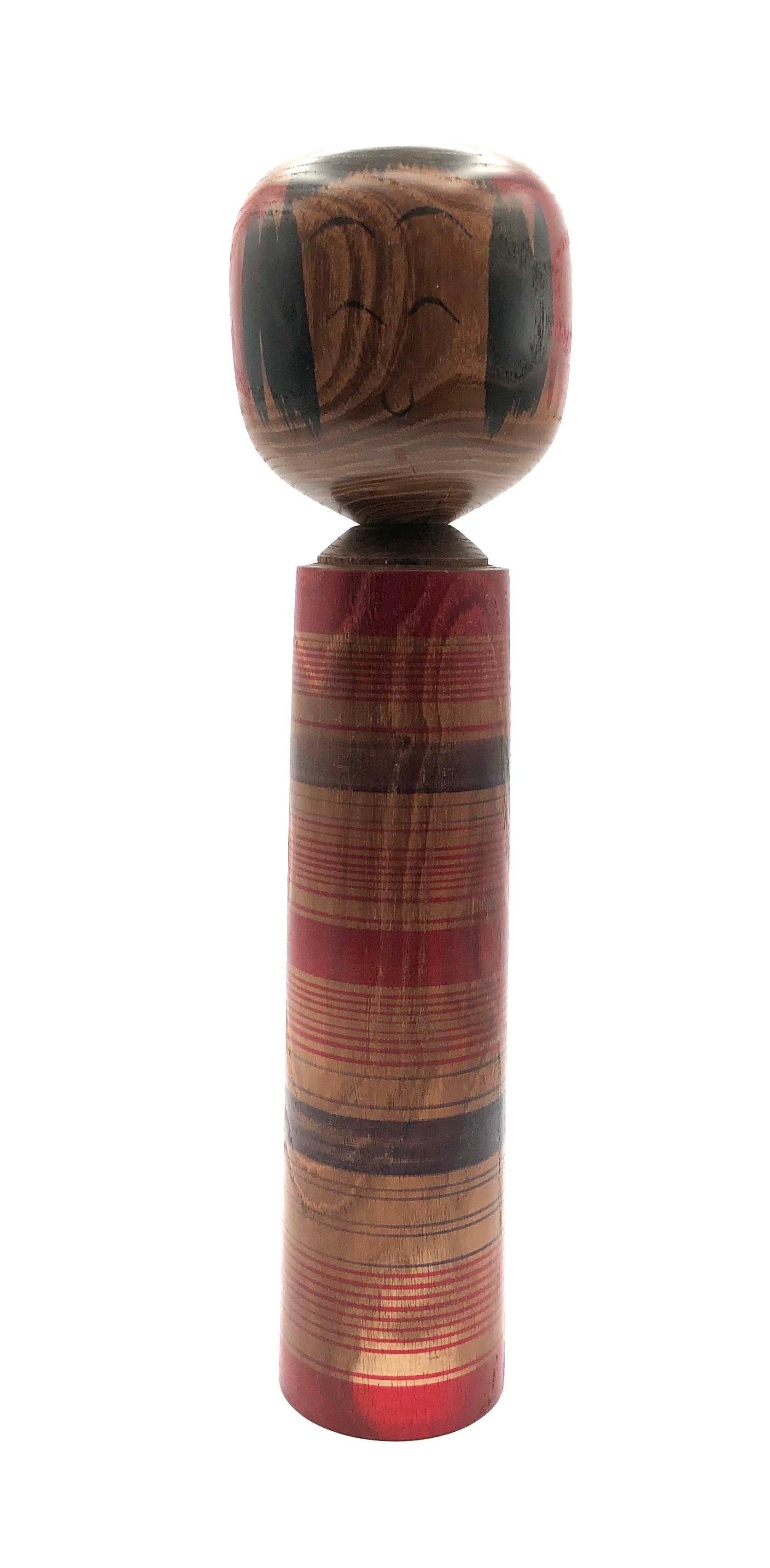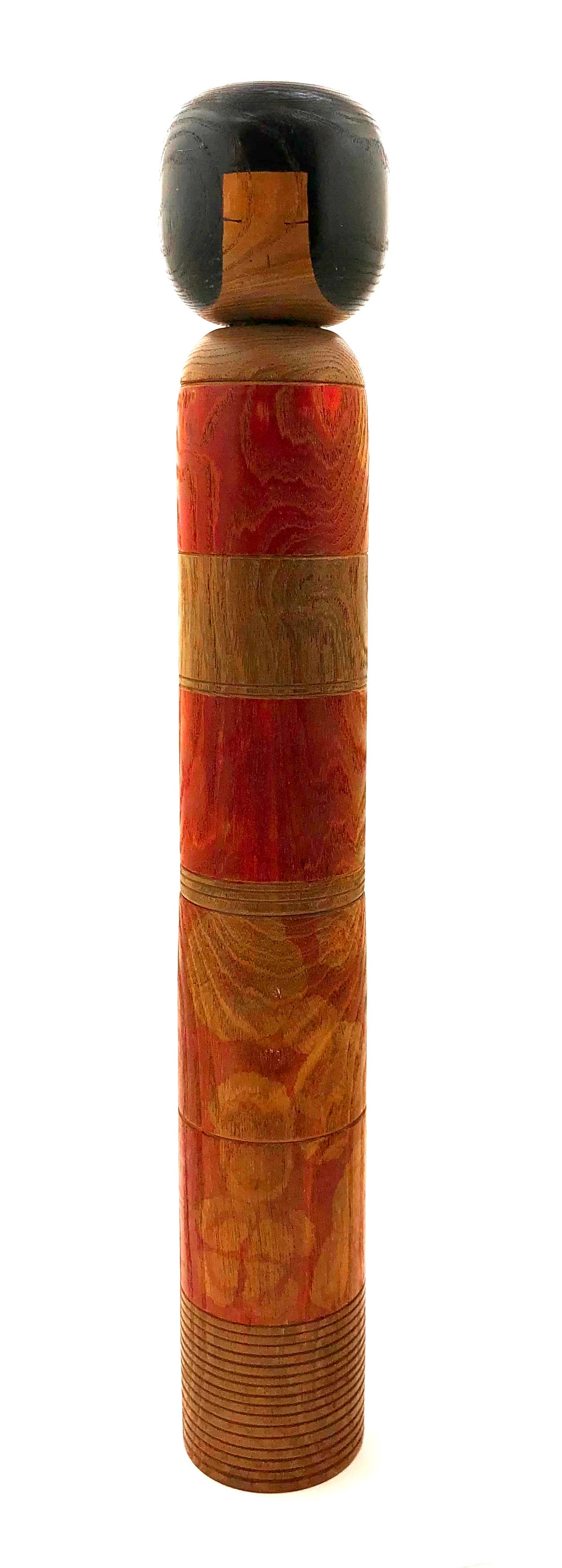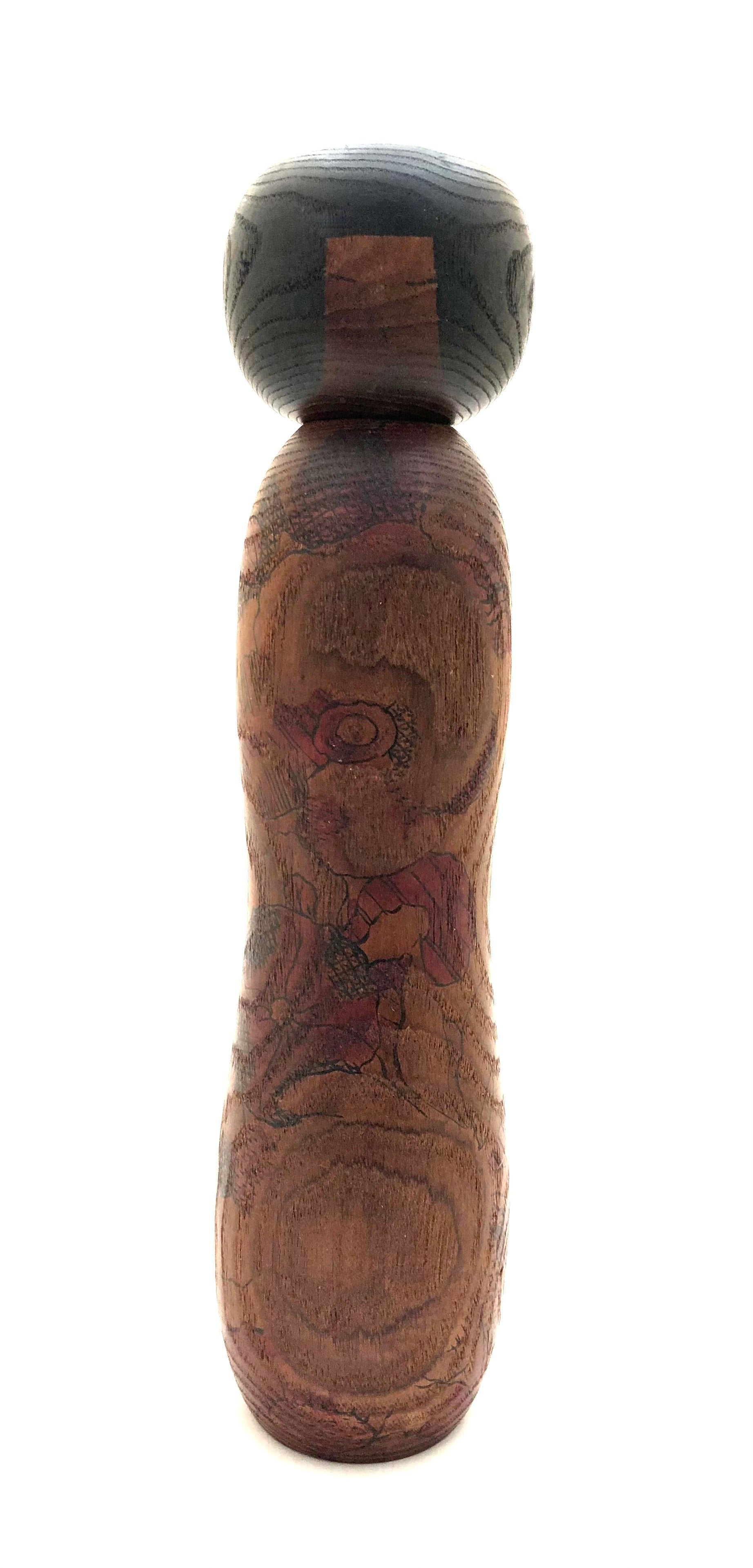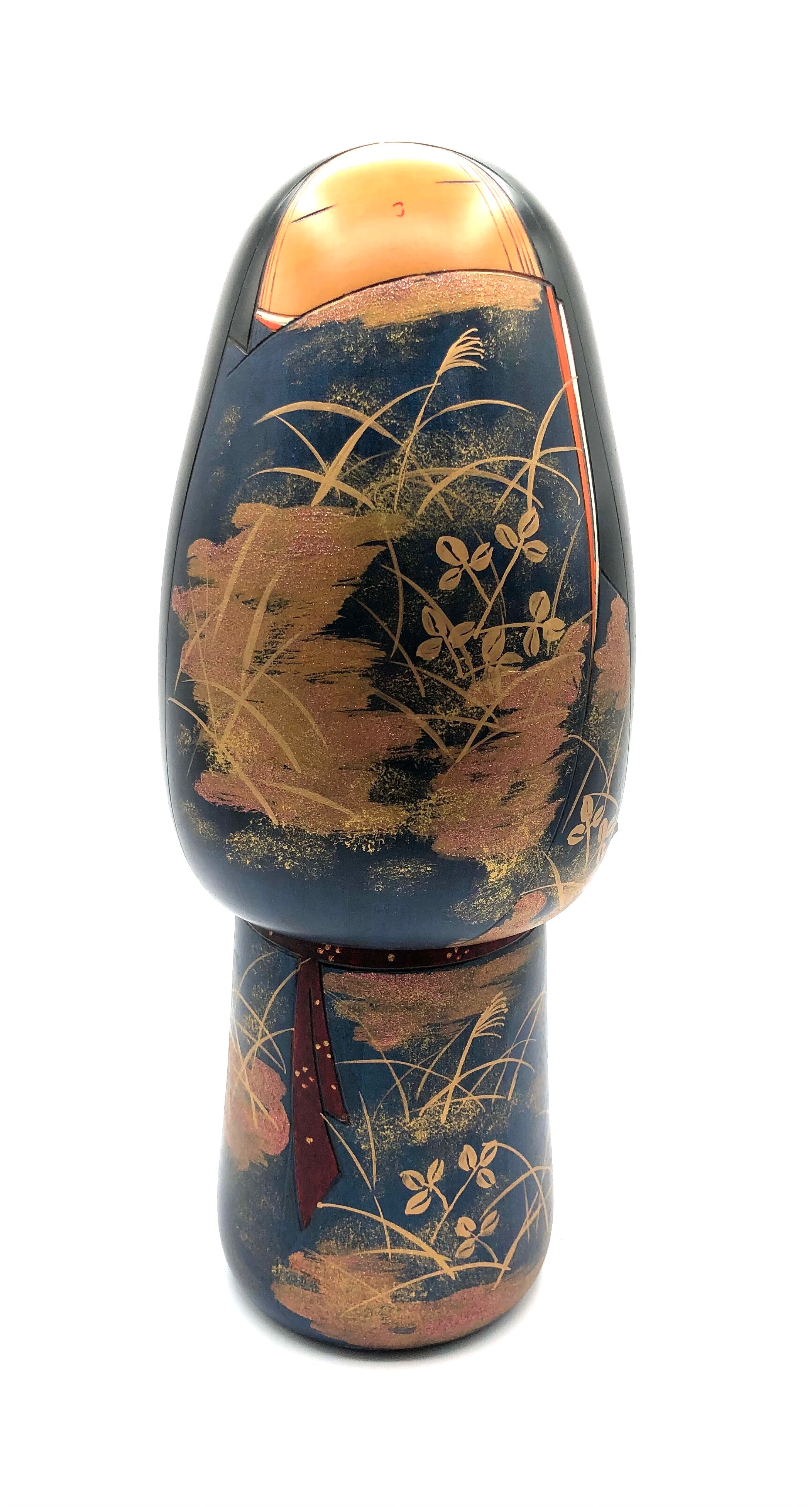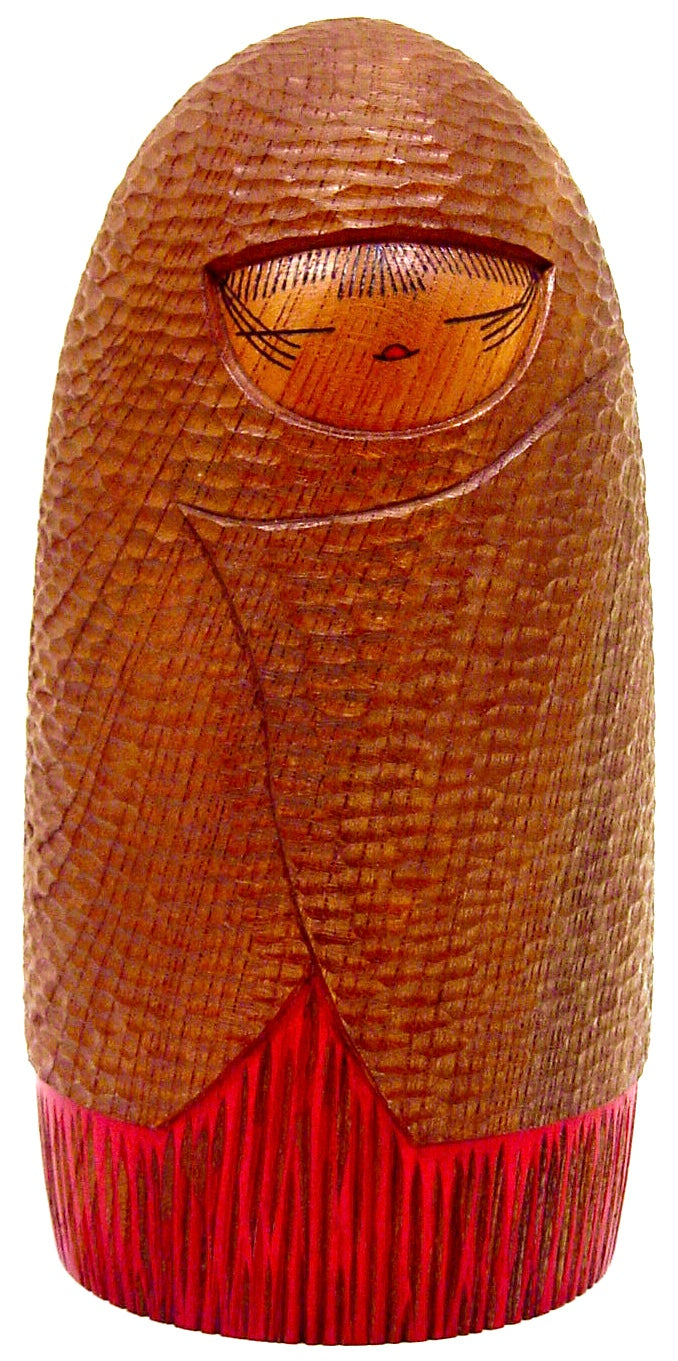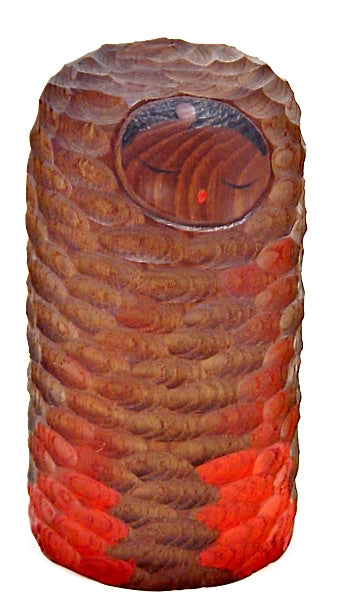Sosaku Kokeshi: A New Look at an Old Tradition
The art of Sosaku, (Creative), and modern Kokeshi doll making began in the early 1940s, grew and flourished in the 1950s-60s, and well into the 70s. Kokeshi represent a measure of the spirit-infused status of the wood, and they are believed to retain the material’s original sacred and natural qualities. ‘Kokeshi’ made in other countries, (China, Korea, etc.), are not Kokeshi, and do not represent the spirit from which they were conceived.
After Japan gave access to Western ideas, many Creative Kokeshi artists wanted to honor the carving tradition, but did not want to follow traditional family designs. The Japanese use the term ‘Mottainai’, which was originally a Buddhist word that referred to the “essence of things.” Applied to everything in the physical universe, the word suggests that objects do not exist in isolation but are intrinsically linked to one another. ‘Mottainai’ is also an expression of sadness for the disrespect that is shown when any living or non-living entity is wasted. Thus we find the Sosaku artists focusing on a new visual approach to the creation of the Kokeshi doll, reinforcing of the important part that forests play in the daily life of the people.
The images represented in Japanese Sosaku Kokeshi carving typically fall into one of three categories: iconic scenes, significant themes and motifs in history and literature, and objects in everyday life, (e.g. kimono/yukata, children/baby, seasonal grasses/flowers). Additionally, the seasons have been celebrated in Japan for centuries, and have influenced design on all forms of art produced in that country. Kokeshi dolls are certainly no exception, as seasonal motifs and mythological subjects are carved and painted in a variety of methods on their bodies.
Through its early cultural ties with China, Japan has a long, rich tradition of poetry celebrating the seasons. Popular Haiku often appear on Kokeshi, enhancing the ornamentation of the dolls’ depiction of the season portrayed.
Ume (plum), and Sakura (cherry), blossoms herald the arrival of Haru, (Spring). Sama, (Summer), appears in the form of Ayame, (Iris), Take, (Bamboo), and even Matsuri, (Festivals). Aki, (Autumn), adorns Kokeshi through the paintings of Momiji, (Maple Leaves), in red, orange, and yellow colors, or Kiku, (Chrysanthemum), a very important symbol of autumn throughout the country. Fuyu, (Winter), shows up as snowy pine, (Yuki no matsu), heavy rain and snow coats, scarves, and head coverings, which in some cases almost dwarf the figure within. As much as Kokeshi represent memories, or moments in time, their ties to the four seasons are undeniable.
While a number of these artisans did apprentice under Traditional masters, the Sosaku Kokeshi artists showed exciting variety and imagination, for the dolls produced were larger in many cases, and were certainly more elegant. Many of them were created using more than one type of wood, with the various woods comprising the clothing and hair treatments; and with the application of different methods of carving, chiseling, “harmonic chatter-work”, (Birikan’na), and wood-burning techniques, the dolls were a far different type of Kokeshi than their Traditional predecessors.

Once the tourists visiting the area’s popular hot springs, during the long winters, wanted a token of their stay, the woodworkers began shaping and painting more attractive and culturally sensitive versions for sale, thus reinforcing the importance of both historical and contemporary impressions of motifs seen throughout history.

